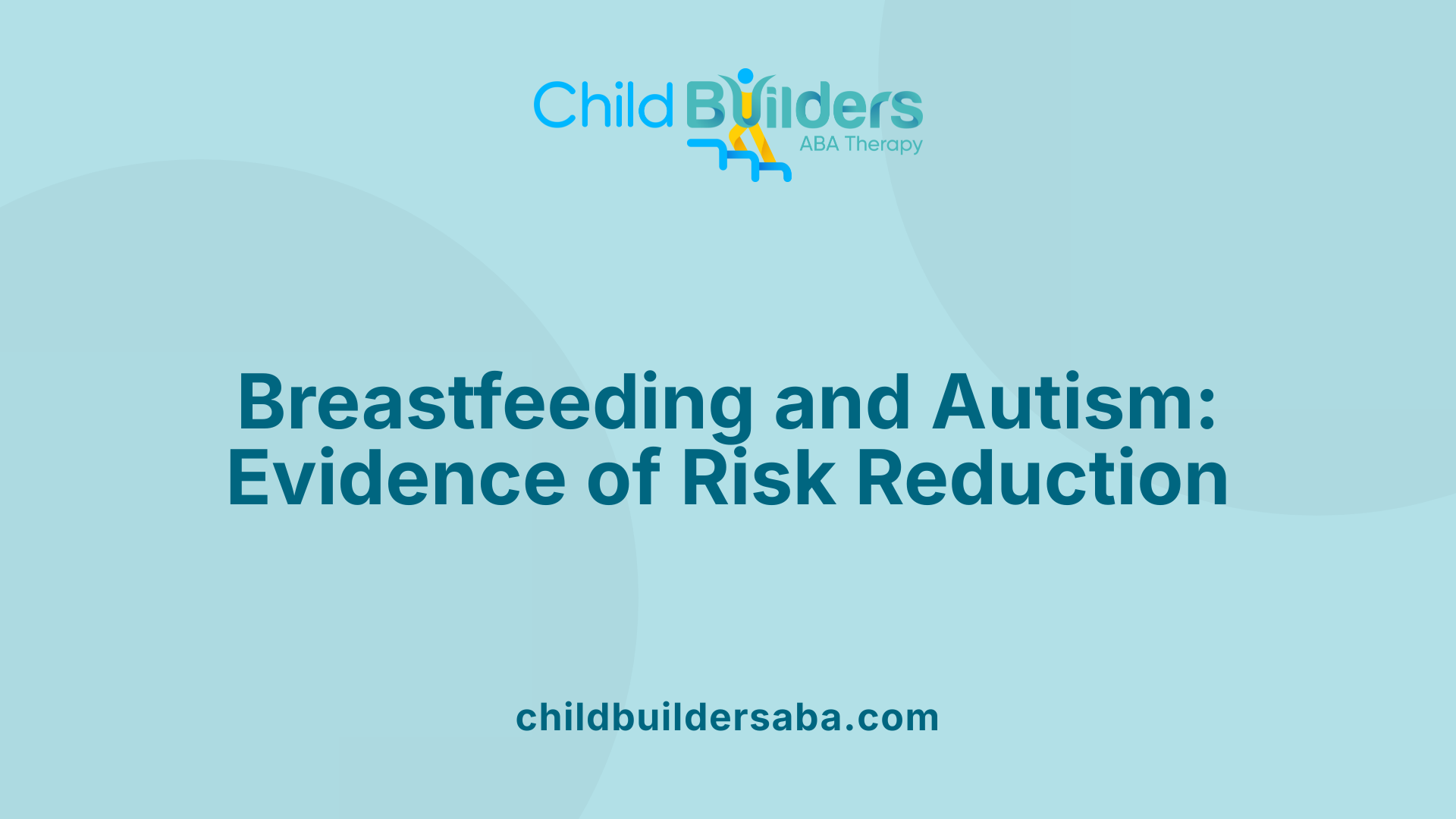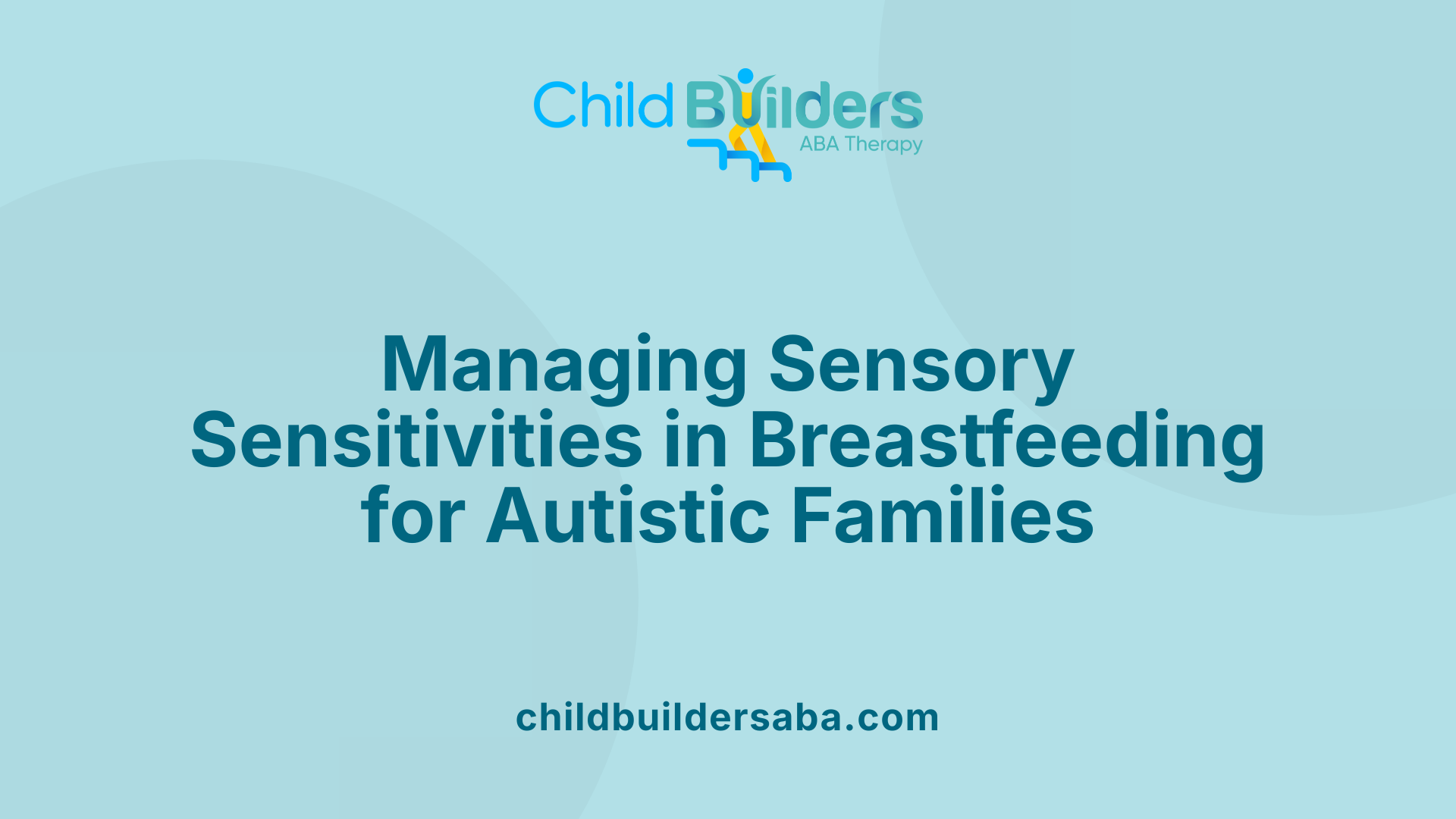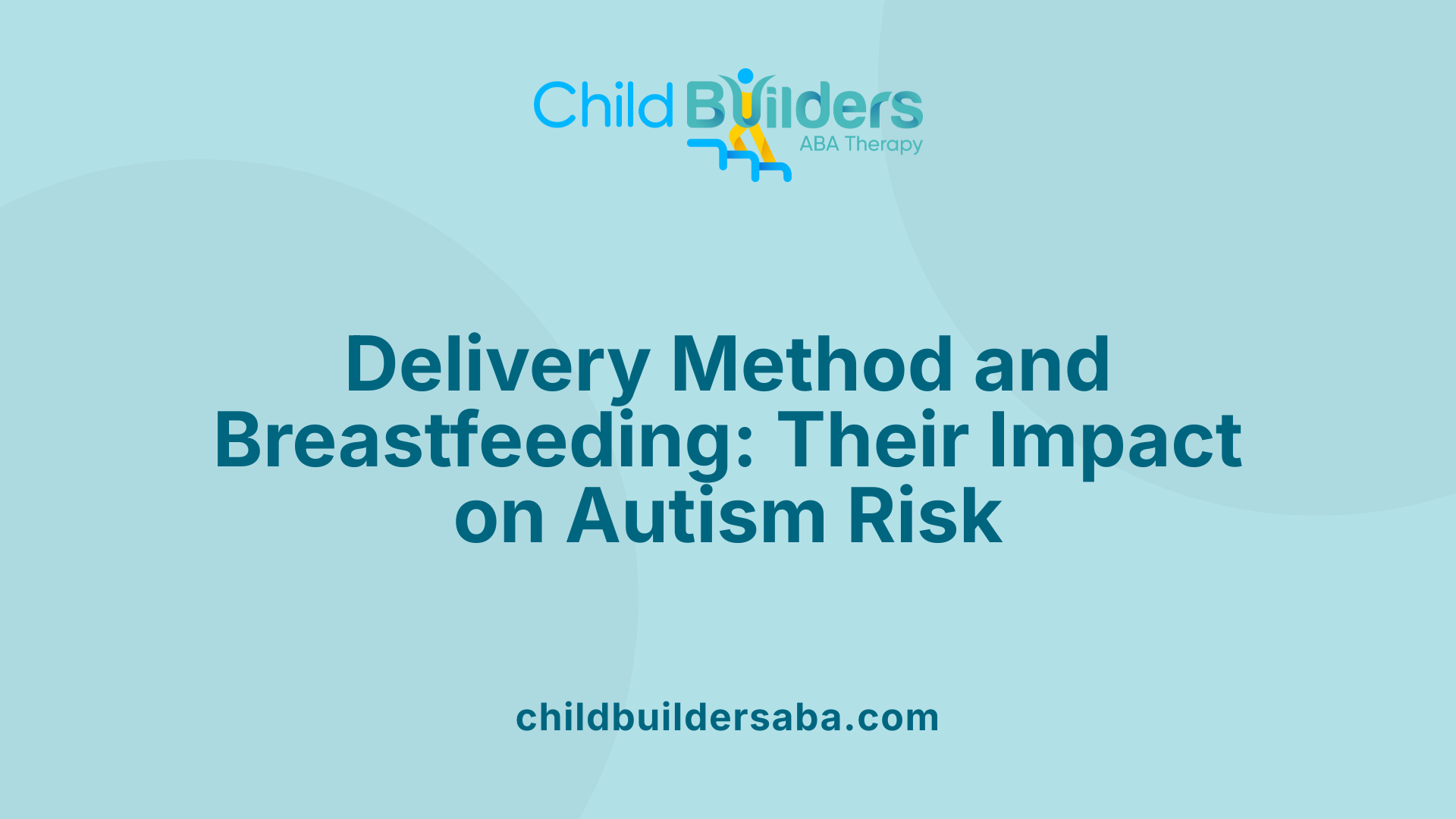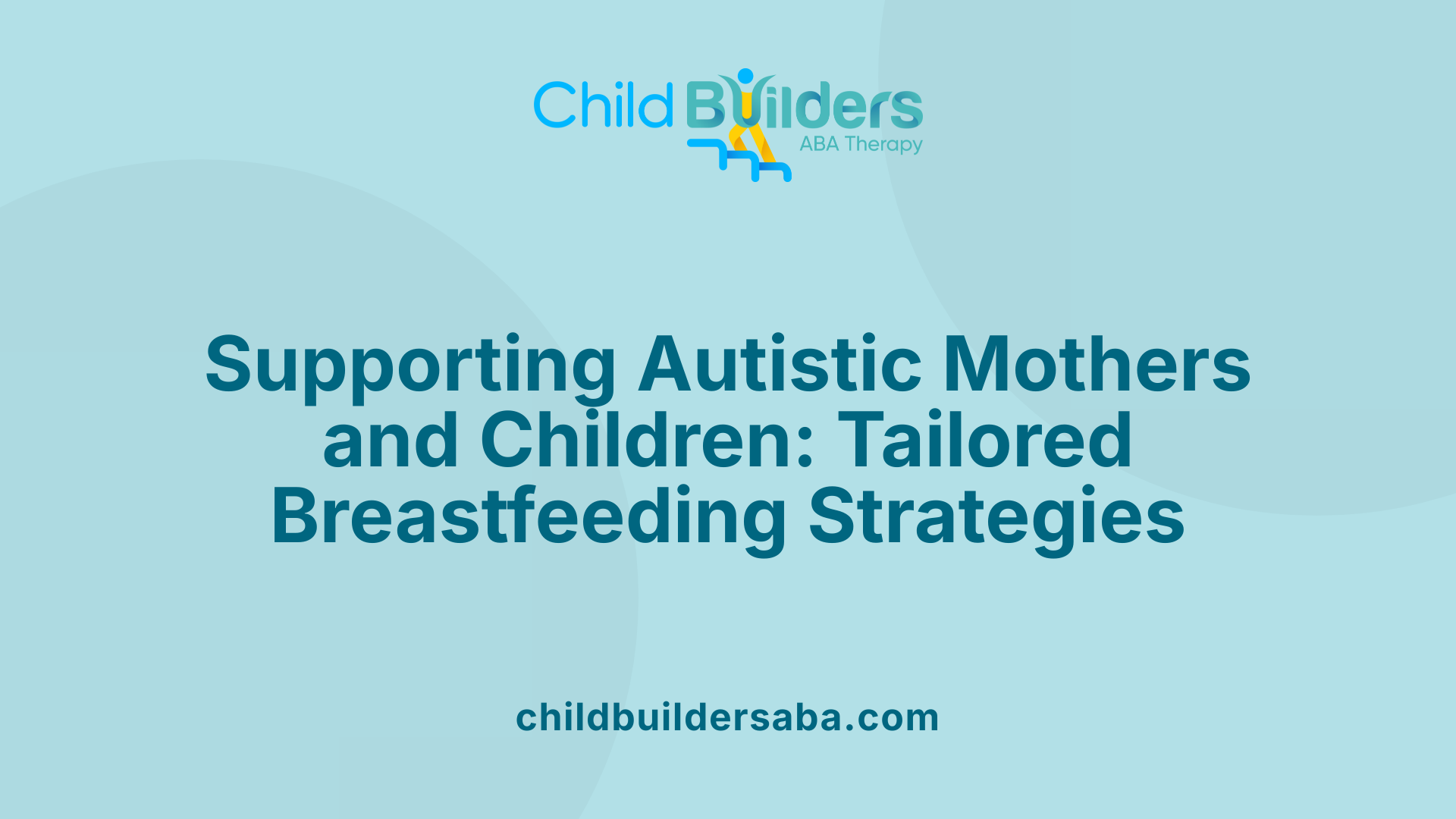Breastfeeding And Autism

Understanding the Protective Role of Breastfeeding in Autism Spectrum Disorder
Recent scientific findings highlight the potential protective effects of breastfeeding against autism spectrum disorder (ASD). This article explores the current evidence linking breastfeeding duration and practices with autism risk, the biological mechanisms involved, and practical implications for health strategies.
The Evidence Linking Breastfeeding to Autism Risk Reduction

Does breastfeeding reduce the risk of autism spectrum disorder (ASD)?
Current research provides strong evidence that breastfeeding can lower the likelihood of autism spectrum disorder (ASD) in children. Meta-analyses and numerous epidemiological studies show that children who are breastfed are significantly less likely to develop ASD compared to those who are not.
A comprehensive meta-analysis, which included seven high-quality studies with a total of 3,270 participants, found that children who were not breastfed had an increased risk of developing ASD, with an odds ratio of 1.81 (95% CI, 1.35–2.27). This means non-breastfed children were about 81% more likely to be diagnosed with ASD than their breastfed counterparts. Moreover, the protective effect of breastfeeding appears to be dose-dependent.
Specifically, exclusive breastfeeding for 6 months is associated with a 54% reduction in ASD risk, and extending the duration to 12-24 months can further enhance this protective effect. Breastfeeding during this extended period seems to offer the most significant reduction in autism risk.
The timing of breastfeeding also matters. Breastfeeding at 4 months, particularly exclusive breastfeeding, mediates reduced autism-like behaviors and can buffer adverse outcomes associated with cesarean sections. Longer breastfeeding duration, especially beyond 12 months, is linked to a lower risk, with an adjusted odds ratio of 0.418.
While these findings are promising, it is essential to recognize that ASD results from complex interactions between genetic and environmental factors. Breastfeeding may contribute as part of a broader set of factors influencing neurodevelopment.
Implications of findings for public health
The evidence underscores the importance of promoting breastfeeding as a potential strategy to reduce ASD risk. Encouraging exclusive breastfeeding for at least the first 4 to 6 months, and supporting extended breastfeeding, could be beneficial public health practices.
Supporting mothers through education, lactation support, and recognizing the unique challenges that autistic mothers face—such as sensory sensitivities and emotional factors—can enhance breastfeeding rates and durations. Moreover, understanding the role of nutrition, including vitamin D levels during breastfeeding, can help optimize outcomes.
Overall, fostering breastfeeding-friendly environments may contribute to healthier neurodevelopmental trajectories for children, potentially decreasing autism prevalence and supporting early behavioral development.
Optimal Duration of Breastfeeding for Autism Prevention
Research indicates that breastfeeding can play a role in lowering the risk of autism spectrum disorder (ASD). A comprehensive meta-analysis reviewing seven studies with over 3,200 participants found that children who were not breastfed had nearly twice the likelihood of developing ASD compared to those who were. Specifically, the study showed an odds ratio of 1.81, meaning the absence of breastfeeding increases the risk.
The analysis highlights that longer durations of breastfeeding are associated with greater protective effects. Breastfeeding for at least 12 months appears to offer the most significant reduction in ASD risk, with some evidence suggesting even extended breastfeeding, up to 12–24 months, can be beneficial.
When comparing modes of breastfeeding, exclusive breastfeeding is linked to a higher protective effect. Children who were exclusively breastfed showed a 76% lower chance of developing autism spectrum disorder, whereas those who experienced partial breastfeeding also benefitted, with a reduction noted in the odds.
The relationship between breastfeeding duration and neurodevelopment suggests that maintaining breastfeeding for a year or more could positively influence brain development, possibly through nutrients like fatty acids and hormonal benefits such as the release of oxytocin during suckling.
While definitive guidelines on the exact optimal period are still converging, current evidence supports encouraging mothers to breastfeed exclusively for at least 6 months and continue longer if possible, ideally up to or beyond 12 months.
In summary, extending breastfeeding duration, particularly beyond 12 months, seems to contribute to a lower ASD risk, emphasizing the importance of supporting mothers in sustained breastfeeding practices. As further research explores these connections, healthcare providers should promote breastfeeding as part of early childhood developmental strategies.
The Biological and Behavioral Mechanisms Behind Breastfeeding’s Protective Effect
What are the potential mechanisms linking breastfeeding with autism risk or protection?
Breastfeeding appears to offer protective effects against autism spectrum disorder (ASD) through multiple biological and behavioral pathways. One significant aspect involves the rich nutrient profile of breast milk, particularly fatty acids like DHA (docosahexaenoic acid), which are essential for brain development. These nutrients support the growth of neural connections and myelination, crucial during early childhood.
Another important factor is the release of oxytocin during breastfeeding. Known as the 'bonding hormone', oxytocin promotes social bonding and emotional regulation. Its release may help in reducing some behaviors associated with ASD by enhancing social responsiveness and calming the infant.
Breast milk also influences the gut microbiome— the community of bacteria in the digestive system. Human milk oligosaccharides (HMOs) serve as prebiotics, fostering the growth of beneficial bacteria. A balanced gut microbiome is increasingly linked to healthy neurodevelopment through the gut-brain axis.
Furthermore, immune components in breast milk, such as lactoferrin and various cytokines, help modulate immune responses. Since immune dysregulation and chronic inflammation have been implicated in the development of ASD, supporting immune health might contribute to lowered risk.
Research indicates that longer durations of breastfeeding, particularly beyond six months, correlate with more significant neurodevelopmental benefits. Overall, these interconnected mechanisms suggest that breastfeeding plays a role in reducing ASD risk by supporting brain growth, emotional regulation, immune function, and gut health.
Sensory Differences and Breastfeeding in Autistic Children and Mothers

How do sensory sensitivities affect breastfeeding experiences?
Many autistic children and mothers have sensory sensitivities that can influence breastfeeding. Autistic children may experience discomfort during milk let-down, noise sensitivities, or aversions to certain textures and sensations, which can affect their willingness or ability to nurse consistently. Mothers with autism might also face sensory challenges, such as heightened sensitivities to touch, sounds, or light, making the tactile and environmental aspects of breastfeeding overwhelming or stressful.
What environmental modifications can improve feeding experiences?
Adjusting the environment helps support successful breastfeeding for both autistic children and mothers. Creating quiet, dimly lit spaces can reduce sensory overload. Using soft, calming sounds or white noise can help drown out distracting or distressing noises. Modifications such as breastfeeding in a familiar, comfortable chair, or providing soft fabrics and textured materials, can also make the experience more soothing. These adaptations aim to minimize sensory irritants and create an inviting space conducive to feeding.
How does self-regulation influence feeding patterns in autistic children?
Autistic children often use frequent breastfeeding as a way to self-regulate their sensory input and emotional state. This behavior can help manage discomfort caused by sensory processing differences. Breastfeeding might be used more often or for longer durations by autistic children to achieve comfort and calming effects, making it an essential part of their daily regulation routine.
What strategies support autistic mothers during breastfeeding?
Providing tailored support to autistic mothers is crucial. Strategies include using visual aids like picture cards or sign language to enhance communication, offering clear and consistent guidance, and being patient with sensory needs. Support groups or lactation consultants familiar with autism can help address unique sensitivities, emotional challenges, and logistical concerns. Recognizing and accommodating sensory differences fosters a positive breastfeeding experience, empowering mothers and improving their infant’s developmental environment.
Additional insights on health and behavioral outcomes linked to breastfeeding
Research suggests breastfeeding influences health and behavior beyond ASD risk reduction. It has been associated with lower rates of behavioral problems, better emotional regulation, and improved cognitive development. Hormones like oxytocin released during breastfeeding strengthen maternal-infant bonding and reduce postpartum depression, providing emotional stability for both. Nutrients such as DHA support brain development, and the immune-boosting properties of breast milk contribute to overall health. These benefits highlight that breastfeeding plays a valuable role in supporting the broader neurodevelopmental and emotional well-being of children.
Impacts of Delivery Method and Breastfeeding Practices on Autism Outcomes

What does research say about the relationship between breastfeeding duration and autism risk?
Scientific studies consistently show that breastfeeding plays a protective role in reducing the likelihood of autism spectrum disorder (ASD). Longer durations of breastfeeding, especially exclusive breastfeeding for at least 6 months, are linked to significantly lower risks.
Data from a comprehensive meta-analysis of seven epidemiological studies involving 3,270 children indicates that children who were breastfed had a 58% lower risk of ASD overall. Specifically, exclusive breastfeeding for 6 months is associated with a 54% reduction, while breastfeeding lasting 12 to 24 months correlates with the most noticeable decrease in ASD risk.
The relationship appears to operate in a dose-dependent fashion, meaning the longer a child is breastfed, the greater the potential benefit for neurodevelopment. For example, exclusive breastfeeding in this period may reduce ASD risk by up to 76%. Additionally, children who breastfed beyond 12 months showed a lower odds ratio (aOR=0.418), emphasizing that extended breastfeeding can be especially beneficial.
However, some studies have found no definitive link, underscoring the need for further research. Nevertheless, current evidence supports promoting breastfeeding as a potential strategy to diminish the chances of ASD diagnoses, alongside supporting overall infant health and development.
How does caesarean delivery affect breastfeeding and its relation to autism?
Women who deliver via caesarean section often face delays in initiating breastfeeding and difficulties in establishing exclusive breastfeeding routines. This is partly due to delayed milk production (lactogenesis) and discomfort post-surgery. At 4 months, a lower proportion of cesarean-delivered infants are exclusively breastfed compared to those delivered vaginally.
Research from China’s Ma’anshan birth cohort demonstrates that children who were breastfed exclusively at 4 months showed fewer autism-like behaviors than those who were not. Structural equation modeling suggests that exclusive breastfeeding mediates the link between caesarean delivery and reduced autism-like behaviors, especially at 18 months and 3 years.
This finding implies that promoting exclusive breastfeeding after cesarean deliveries could help mitigate potential risks for autism-related behaviors, emphasizing the importance of providing adequate lactation support to mothers post-surgery.
What is the impact of early introduction of solids on autism risk?
Introducing solids before 6 months of age is associated with increased odds of autism. A study shows that infants who received solids earlier have a higher likelihood—more than double—of developing ASD (adjusted odds ratio = 2.455).
This highlights the importance of adhering to recommended feeding practices, such as exclusive breastfeeding for about the first six months before introducing solids, to support optimal neurodevelopment and potentially lower autism risk.
How can support for breastfeeding be optimized for mothers with special needs?
Mothers who experience sensory sensitivities, anxiety, or other challenges—common among autistic women—may find breastfeeding more difficult. Sensory differences can affect their comfort with the milk ejection reflex, exposure to noise, or handling infant cues.
Providing tailored support, including visual aids like picture cards, sign language, quiet environments, and gradual guidance can facilitate breastfeeding. Recognizing these needs ensures better Breastfeeding experiences, which may contribute to improved neurodevelopmental outcomes and reduced autism risk in children.
Supporting autistic children or those with sensory sensitivities may involve creating suitable environments, helping regulate feeding routines, and being patient with weaning processes or setting boundaries.”}
Vitamin D, Breastfeeding, and Autism: An Emerging Connection

What is the role of vitamin D levels in neurodevelopment?
Vitamin D plays an essential part in early brain development. Adequate vitamin D levels are believed to support neuronal growth, differentiation, and synaptic function. Emerging research indicates that sufficient vitamin D concentrations during pregnancy and early childhood are linked to healthier neurodevelopmental outcomes in children.
How does maternal vitamin D deficiency impact breastfeeding and autism risk?
When mothers have low vitamin D levels, it can be passed to infants through breast milk, especially if supplementation is not provided. Such deficiencies during critical developmental windows may increase the risk of neurodevelopmental issues, including autism spectrum disorder (ASD). Some studies suggest that vitamin D deficiency might contribute to the development of autism-like behaviors.
What benefits does vitamin D supplementation offer, and what does research say?
Vitamin D supplementation, particularly in cases of maternal deficiency, has shown promising results. High doses of vitamin D have been associated with improvements in core autism symptoms in some children. While more research is needed, these findings underline the potential of vitamin D supplementation as a supportive strategy in ASD management.
Are there any links between breastfeeding, vitamin D, and autism?
Breastfeeding provides numerous benefits for infant neurodevelopment, including protection against ASD. Since vitamin D deficiency can affect breastfed infants, ensuring adequate maternal and infant vitamin D levels through supplementation could enhance these protective effects. Combining breastfeeding with appropriate vitamin D intake may further reduce autism risk and support optimal brain development.
| Aspect | Impact on Autism | Additional Details |
|---|---|---|
| Breastfeeding duration | Longer = lower risk | Especially beneficial beyond 6 months and up to 2 years |
| Mode of breastfeeding | Exclusive breastfeeding offers more protection | Partial breastfeeding also reduces ASD odds |
| Vitamin D levels | Adequate levels = better neurodevelopment | Deficiency linked to increased ASD risk |
| Supplementation | Potential benefit in ASD symptoms | Helps mitigate maternal and infant deficiencies |
Both breastfeeding and vitamin D status are important factors in early neurodevelopment, and their interplay may influence autism risk. Continued research in this area could lead to more targeted strategies to promote optimal development in at-risk populations.
The Importance of Support and Realistic Expectations in Breastfeeding for Autistic Mothers and Children
 Many autistic women face unique challenges when breastfeeding, due to sensory sensitivities, emotional barriers, and difficulties with communication. These factors can make the process more complex compared to neurotypical mothers, requiring tailored support.
Many autistic women face unique challenges when breastfeeding, due to sensory sensitivities, emotional barriers, and difficulties with communication. These factors can make the process more complex compared to neurotypical mothers, requiring tailored support.
Sensory sensitivities, such as discomfort with touch, noise, or certain textures, might affect a mother’s ability to comfortably nurse or handle breastfeeding equipment. Some autistic mothers experience heightened sensitivity during milk let-down or find noisy environments overwhelming, which can hinder their breastfeeding experience.
Emotional barriers, including anxiety or stress related to social interactions or expectations, may also impact breastfeeding success. Moreover, autistic children often process sensory input differently, which can influence their patterns of feeding and self-regulation. They may prefer frequent breastfeeding for comfort, requiring caregivers to adapt environments accordingly.
Effective support strategies include using picture cards or sign language to facilitate communication about breastfeeding needs, creating quiet, calming spaces for feeding, and offering specific guidance tailored to sensory sensitivities. Healthcare providers and lactation consultants can help implement modifications, such as controlling noise levels, adjusting lighting, or providing sensory-friendly breastfeeding aids.
Setting boundaries and approaching weaning with sensitivity is crucial, as autistic children might rely heavily on breastfeeding for emotional regulation. Supporting families through gradual weaning, while recognizing the child's sensory and emotional needs, fosters a positive experience.
Supporting autistic mothers and children in breastfeeding involves understanding their unique needs and providing customized assistance. This approach not only promotes successful breastfeeding but also nurtures bonding, emotional well-being, and developmental outcomes.
Conclusion: Promoting Breastfeeding for Neurodevelopmental Benefits
Emerging research underscores the potential of breastfeeding to serve as a protective factor against autism spectrum disorder, with longer durations providing greater benefits. While it is not a standalone prevention method, promoting exclusive and sustained breastfeeding can be an important part of early childhood neurodevelopment strategies. Supporting autistic mothers and children in overcoming sensory and emotional challenges is essential to maximize these benefits. Continued research will further clarify causal relationships and optimal practices, ultimately informing public health policies and clinical guidance aimed at fostering healthier developmental outcomes.
References
- Association of breastfeeding status with risk of autism spectrum ...
- Not breastfeeding and risk of autism spectrum disorders among ...
- Breastfeeding and Autism - La Leche League GB
- Breastfeeding patterns in infants are associated with a later ...
- Impact of caesarean delivery on children's autism-like behaviours
- Breastfeeding and Autism: Is There a Connection?
- Not breastfeeding and risk of autism spectrum disorders among ...
- PubMed
- Not breastfeeding and risk of autism spectrum disorders among ...
- Association of breastfeeding status with risk of autism spectrum ...






.jpg)






























































































